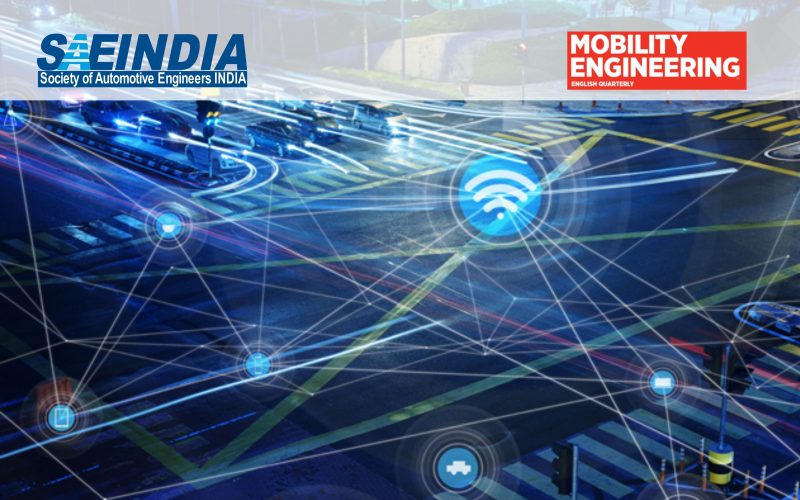How Quantum Computing is shaping the Future of Urban Mobility
How do we address the Urban Mobility Challenges of pollution, traffic congestions and vehicular accidents? Sustainable Mobility solutions for the future are being built based on autonomous, connected, electric and shared vehicles. When we shift to these new technologies, we need to solve complex problems that demand far more computing power and faster processing. The limitations of classical computing have made us explore quantum computing for processing large amount of data and at high speed. In this article, we describe What is Quantum Computing (QC), how is it different from classical computing and how does it work. We illustrate the potential for application of QC using three Real World Case studies – (a) how does QC help in autonomous navigation (b) how does QC help in city traffic management and (c) how does QC help in Demand Vs Supply management & surge pricing for ride hailing businesses. We illustrate how automotive OEMs are collaborating with QC leaders and co-creating innovative mobility solutions for the future. Finally, we present a snapshot of where QC is today – the key players and the maturity of the technology for adaptation by industry.
- Introduction
- 1. Urban Mobility Challenges
Automotive technology today is undergoing a paradigm shift in order to meet the rapidly changing demands of the industry, society and the statutory bodies. Some of the challenges faced are the reduction of emissions (Particulate matter & NOx) from the tail pipe to meet stringent emission norms, management of dense traffic in cities and the avoidance of vehicular collisions. This challenge has presented to automotive industry an opportunity to come up with innovative solutions not seen in the previous generations of the automotive world. These solutions are provided with the objective to make mobility more affordable and sustainable to the public at large.
 1.2 Future of Mobility
1.2 Future of Mobility
The urban mobility solutions that we pursue today involve (a) electric vehicles where there is shift from the conventional internal engine powertrain to an electric powertrain (b) autonomous vehicle where we introduce technologies to assist the driver and eventually move towards a self-driving vehicle (c) connected vehicles that coordinate their movement with other vehicles and (d) shared vehicles that maximize the utilization of vehicles. The ability of the industry to provide these solutions at an affordable price is mainly due to its successful adaptation of certain exponentially growing technologies like cloud computing, Artificial Intelligence (AI), Machine Learning, Energy Storage, Autonomous Vehicles, Robotics etc. The convergence of these exponential technologies is expected to fundamentally change the urban mobility landscape.
These applications involve large amount of discrete data from different sources that is optimized to provide different mobility solutions. The vastness of the data and the high speed with which the calculations need to be done (imagine a self-driving vehicle that receives data from all other vehicles on the road and dynamically optimizes its speed and route) demands very powerful computing technology. In this article, we will be discussing about Quantum Computing (QC) technology that has great potential for application in the automotive domain.
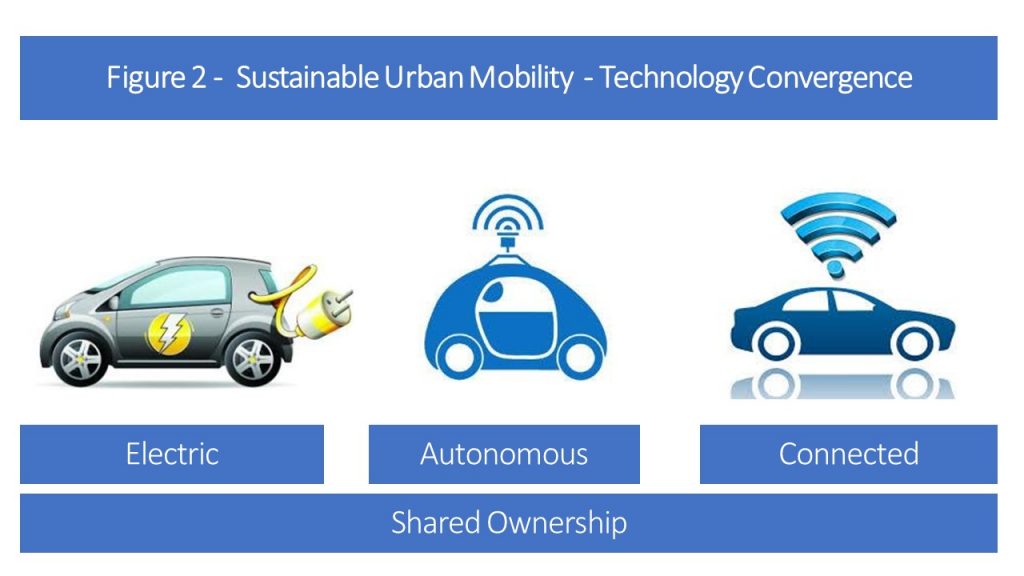
- Quantum Computing
Quantum Computing (QC) is a powerful computing technology that relies on the laws of quantum mechanics to perform complex calculations in a fundamentally different way as compared to a classical computer. QC is useful in solving problems that cannot be handled by a classical computer (due its limitations in its processing abilities and memory). University of Florida and University of North Carolina develop ANAKIN-ME (Accurate NeurAI network engINe for Molecular Energies) or ANI (for short) to produce computationally fast quantum mechanical (QM) simulations with high accuracy at a very low cost. ANI uses deep learning with NVIDIA GPUs to create these QM simulations. In the case of molecular modelling, QM simulations are shown to predict molecular energy surfaces for molecules as accurate as methods that are six orders of magnitude more computationally expensive.
According to Dr. Hartmut Neven, founder of the Quantum AI Lab at Google, quantum computers are gaining computational power relative to classical computers at a “doubly exponential” rate – hence QC is a technology that no mobility engineer can afford to ignore. The objective of our paper is to introduce QC in an interesting way to mobility engineers by demonstrating how it can solve critical problems in urban mobility space.
2.1 Qubits versus Bits:
The basic differentiating factor in a quantum computing system vis-à-vis a classical computing system is the way in which data is handled and processed and the hardware requirements. One of the basic differences between quantum and classical computing is the medium that each one of the them makes use of, to process data and solve problems. Classical computing processes data in the form of units called “BITS”, each “BIT” representing the smallest unit of data. Quantum computing makes uses of “QUBITS” to store data. While a “BIT” in classical computing can store only one value that is 0 or 1, a qubit can store multiple (more than one) values simultaneously. This ability of qubit to store more than value at the same time enhances the computation power of a quantum computing system.
| 0 | 1 |
| BIT | |
Fig(1A)
| 01 10 | 10 01 |
| QUBIT | |
Fig (1B)
The above table (Fig (1A) and Fig (1B)) shows the difference between the building blocks for classical and quantum computing. While a classical computer takes in one value (BIT) at a time, the quantum computer processes more than one value (qubit) simultaneously, this is called as quantum superposition. The ability to store more than one value translates into quantum computer performing multiple calculations simultaneously, this greatly reduces the time taken for performing complex calculations.
From the above table it is observed that each qubit stores a unique value or information, multiple qubits can be connected or interrelated through a phenomenon called as quantum entanglement. The measurement of qubit towards the desired result or set of results happens through a phenomenon called quantum interference. By harnessing the concepts of quantum mechanics into the field of computation it is now possible to solve complex industrial problems due to increase in processing speed of a quantum computer.
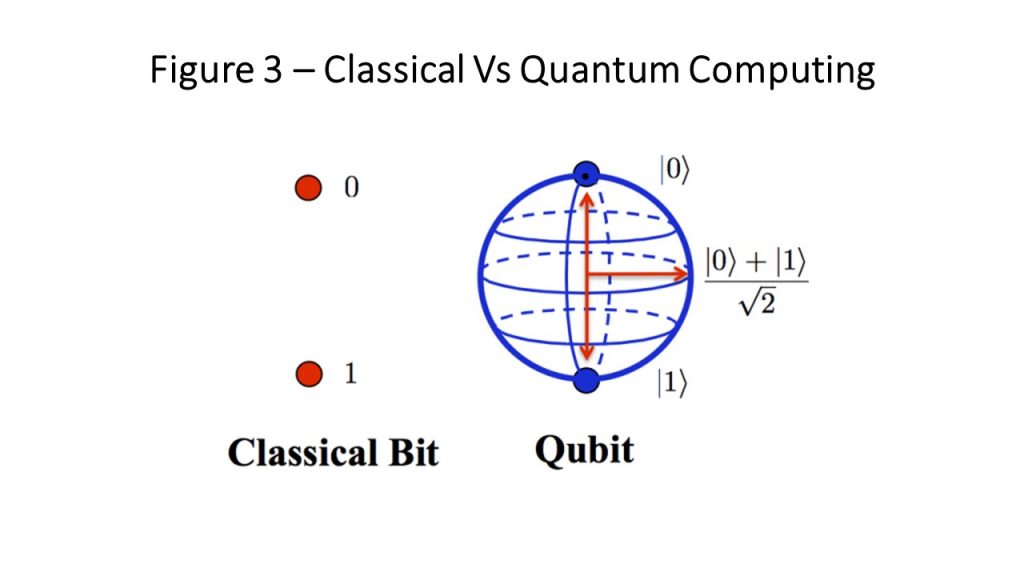
- How can the Automotive Industry leverage Quantum computing?
In order to understand how quantum computing will impact automotive industry let us look at the evolution of technologies in the automotive world. Table 1 illustrates the evolution of technology over three generations of vehicles:
| Table 1 – Evolution of technologies in a vehicle | |||
| Parameters in vehicle | Generation 1 | Generation 2 | Generation 3 |
|
Ratio of Mechanical to electrical and electronic parts
|
80 – 20 |
50 – 50 |
20 – 80 |
|
Lines of code |
Little or no computer codes |
50 million+ |
100 million + |
| Use of sensors | Very Minimal | Sensors are used in electric, connected and autonomous vehicles – but these vehicles form a very small percentage of the population
|
Omnipresent sensors across the entire range of functionality in automobile |
| Driving Decisions | Human makes decisions. | Human makes decision and is assisted by Machine Intelligence.
|
AI makes decisions.
|
From Table 1, we observe that vehicles have moved from standalone mechanical system, to a networked system that can take inputs from different sources, process these inputs and arrive at a suitable decision that is beneficial not just to the user of the vehicle but the public at large. Also, a user of vehicle and the vehicle itself has become a subject of interest to different stakeholders who have an interest directly and/ or indirectly. For example, the law enforcing agencies would be interested in vehicle speed monitoring and violations committed by the user of the vehicle. An insurance company, through which the vehicle is insured, would be interested in the violations and accidents or damages if any resulting from the violations and the like, in order to calculate future premiums and arrive at insurance claims. The data to be collected and analysed for a single vehicle itself is quite large. If this is extrapolated for an entire fleet of vehicle then there is an urgent requirement for having a robust computing system that can handle humungous amount of data and analyse the data within a short span of time to make business-critical and life-critical decisions.
From Table 1, it is also clear that this shift from a mechanical system to an electronically controlled system would require decision making in the automotive system to be performed with the help of a robust computation mechanism. The input for decision making is data from different sources and in order to arrive at a decision quickly in the shortest span of time, the requirement for data to be secure, free from external influences, and the ability for this data to be communicated between different recipients is necessary. It is here that QC technology has the potential to solve the next generation automotive problems. We will illustrate the application of QC in three real world urban mobility applications – (a) managing dense traffic in a city (b) navigating autonomous vehicles on city roads and (c) matching supply Vs demand for shared mobility providers.
3.1 Urban Traffic Management:
Cities across the world have plenty of problems on hand and one of them is how to manage and regulate the burgeoning traffic. However, the same could be solved by leveraging the power of quantum computing. The inputs required for effectively managing the traffic may come from different sources such as regulatory authorities, fleet management companies and specific activities happening at a particular place. For example, collecting the data on the arrival and departure of flights at an airport or trains at a railway station would be required in order to predict the traffic density at a given point of time near an airport or railway station. Based on these inputs a quantum computing algorithm could be developed to predict the volume of traffic flowing through different points. It is estimated that the volume of data that needs to be exchanged to arrive at accurate traffic density calculations would be in giga bytes per hour for a single car and more for places like airport, railway station, offices, etc that exchange data. A quantum computing system that can process vast amount of data would be best suited for optimizing traffic issues in cities and towns as the volume of data that can be processed by a Quantum Computer is significantly higher when compared to a classical computer.
The other important area in traffic management would be route planning. For a vehicle travelling from Point A to Point B there would be various possible alternatives to reach point B. If we take the example of any application providing navigation or app-based guidance, such an application would receive multiple requests for reaching not only point B, but other destinations too. This would require the system to optimize every request before giving the best possible route to a destination. The frequency with which the optimization algorithms need to be performed increases exponentially and it would not be possible for a classical computer to perform optimization of multiple algorithms simultaneously. This is where a quantum computer can step in for performing processing on multiple algorithms simultaneously and help in better route planning for multiple users.
3.2 Autonomous Navigation:
Autonomous navigation enables a vehicle to plan the drive from an origin to a destination point by taking inputs from different sources. Autonomous navigation is not just limited to vehicles on road but may also be applied to robots or trollies in factories to pick and drop items from one location to another. In the case of a car with autonomous navigation system, which is the topic of interest in this article, a sequence of steps needs to be carried out before arriving at an optimized navigation algorithm. Firstly, the navigation system needs to interact with the route navigation application to get to know the different options that the vehicle can take to reach the destination. Secondly, the navigation algorithm also needs to gather real world data which may be subject to changes in a dynamic environment. These data may include obstacles along a route due to an infrastructure activity, sudden surge in traffic on another route due to an event taking place, etc. These activities are dynamic, and the navigation system needs to factor in these activities. By taking into input activities in the real world as dynamic inputs, the autonomous navigation system calculates the time taken to reach a destination through different sets of routes. These complex navigation algorithms need to exchange voluminous amount of data for performing calculations related to navigation, and a quantum computer would be suited due to its capacity to take in multiple data values simultaneously.
A use case of QC in autonomous navigation and traffic management was recently demonstrated by Volkswagen during the WebSummit conference in Lisbon, Portugal. The public transport vehicles were powered with quantum computers that would calculate fastest route from a source to a destination with the help of a Quantum routing algorithm developed by Volkswagen. This algorithm estimates the probability of reaching a destination by taking in variables for calculation along the traffic route and arrives at the fastest route. Since there is an exponential increase in the numbers of variables, a classical computer would fall short in comparison to the quantum computer. These solutions may be implemented with public transport organizations, fleet operators and the like. For these quantum algorithms to work efficiently it would need a cross-functional team – Telecommunication companies, Cloud infrastructure providers, Satellite companies that provide positional information, to work in tandem along with companies that bring QC expertise.
3.3 Matching Supply Vs Demand for Shared Mobility Providers
Transportation today has evolved into a complex interconnected system in comparison to transportation needs few decades ago. With increase in mobile connectivity, the usage of on-demand platforms for accessing a form of transport is becoming popular. The users of these platforms tend to request for vehicle from a starting point to the destination and depending upon the time of the day, the number of users requesting increases exponentially. For example, during peak office hours the request from a residential locality to a tech-park (office location) would be more, during weekends the request to malls and entertainment centres would be on the rise. Predicting the supply and demand for a destination would involve processing real time data across different routes and destination and matching the demand.
It is seen that while the number of users accessing the on-demand service tends to increase suddenly, the availability of vehicles to meet the demand cannot increase equally fast. It is here that the algorithms running on a quantum computer would be able to process the dynamic inputs received from the supply and demand side and allocate the vehicles efficiently and quickly. A classical computer with its limitation of processing speed and memory would not be able to handle the requests that generate from both supply side and demand side and process the same. A quantum computer on the other hand is well suited to handle the multiple requests that are generated and perform computation based on these requests in order to match the supply and demand.
Ineffective management of demand vs supply can lead to fragmentation of the shared mobility market. In recent time, in Indian metro cities, the unavailability of cabs and autos during peak hours, lower estimated time of arrival in heavy traffic conditions for bikes and being more affordable has worked in favour of bike taxis. The proliferation of multiple models in the mobility space such as bike taxis, autos, car or bike rentals, carpooling, last-mile mobility etc. seems to be eating into the share of a single user or sharing services of players such as Ola and Uber. Ola and Uber themselves have been quite active in autos, bike taxis, carpooling and rental markets along with players such as Jugnoo, Rapido, Quick Ride, Zoomcar and Drivezy in the respective markets while Vogo, Bounce, Yulu, etc. have occupied the bike rentals and micro-mobility sub-segments in the overall market.
- Is Quantum Computing technology ready for Industrial Applications?
Acceptance of any new technology depends on its accessibility and affordability. QC technology is currently at a nascent stage, there is a need for further technology development and investments to fuel the development. The hardware necessary for a typical quantum computer needs to operate at extremely low temperatures, sometimes close to absolute zero. Hence for quantum computing to become widespread the use of technologies that enable such a device to operate at near absolute temperature should be economically feasible and easily available. Scientists are also exploring other approaches to control and manipulate the quantum state for computing, without the need for cryogenic temperatures.
The interface between a quantum computer and a classical computer is one of the areas that needs further development. Till the time quantum computer completely takes over classical computer, there would always be a need for a quantum computer to interact and communicate with a classical computer. For example, data from quantum computer may need to be transmitted to a classical computer for further analysis.
The field of quantum computing is a diverse technology area requiring expertise across many domains like Advanced Physics, Solid State Devices and Nanoelectronics, Quantum Programming etc . Hence, a quantum computing professional would need to work in a cross-functional team along with experts from many other domains.
Some of the major players who have invested in the field of Quantum computing are IBM, Google, Intel, Microsoft, D-wave systems, Honeywell etc. These companies can benefit from the first wave of quantum computing due to their extensive capital investments for research & developments. However, it would be difficult for small & medium enterprises to tap into quantum computing due to constraints in terms of capital, manpower and physical infrastructure needed to implement a quantum computing system. There are a good number of technology start-ups exploring QC technology.
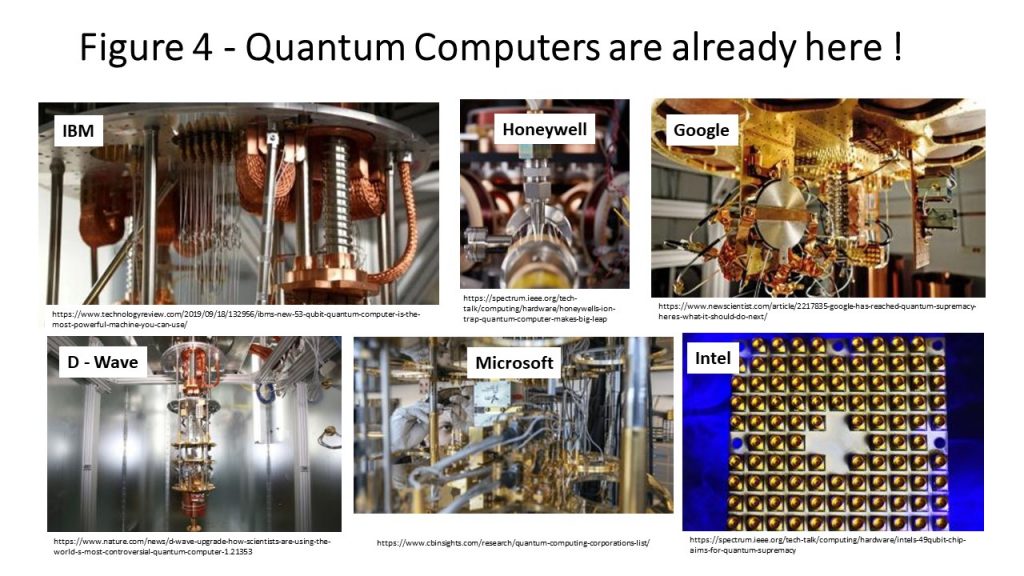 Hence, for the deployment of QC facilities on a large scale in industries & enterprises, Quantum computing as a service (QAAS) would be beneficial from the point of view of cost and scalability. QAAS would increase the reach of quantum computing as the first wave of companies in the field of quantum computing would be able to leverage the knowhow, competency and the physical infrastructure to meet the demand and supply gap that may arise once quantum computing becomes widely accepted. Partnerships and co-creation could be explored to leverage the benefits of Quantum computing.
Hence, for the deployment of QC facilities on a large scale in industries & enterprises, Quantum computing as a service (QAAS) would be beneficial from the point of view of cost and scalability. QAAS would increase the reach of quantum computing as the first wave of companies in the field of quantum computing would be able to leverage the knowhow, competency and the physical infrastructure to meet the demand and supply gap that may arise once quantum computing becomes widely accepted. Partnerships and co-creation could be explored to leverage the benefits of Quantum computing.
- Path Forward
The future of urban mobility is being shaped by exponentially growing technologies like electric, autonomous, connected and shared vehicle technologies. With the convergence of these four technologies, the amount of data and the speed of data processing is expected to grow exponentially. The emergence of Quantum Computing (QC) technology addresses the demand for fast processing of large data. Several big companies have invested in QC technology and there is an active race for Quantum Supremacy among the key players. QC’s potential for a double exponential growth makes it a much sought after for high-speed computing. We see active collaborations emerging between automotive OEMs and QC leaders – Volkswagen, Google and D-Wave, Daimler and Google, Ford and NASA, Denso and D-Wave are good examples. Hence it is important for all automotive OEMs to start exploring QC by forging partnerships with the lead QC players. If data is the new oil, then we need QC to build the refineries that will create value out of the crude oil.
- References for further reading
Introduction to Quantum Computing
- http://innovationflow.blogspot.com/2019/10/quantum-computing-nevens-law-of-double.html
- https://www.ibm.com/quantum-computing/learn/what-is-quantum-computing/
- https://www.wired.co.uk/article/quantum-computing-explained
- https://uwaterloo.ca/institute-for-quantum-computing/quantum-computing-101
- https://www.technologyreview.com/2019/01/29/66141/what-is-quantum-computing/
Collaboration of Automotive-OEMs with QC Companies
- https://www.futurebridge.com/industry/perspectives-mobility/quantum-computing-a-key-to-autonomous-vehicle-industry-success/
- https://www.volkswagenag.com/en/news/2017/11/quantum-computing.html
- https://www.futurecar.com/2713/Ford-NASA-Partnership-Applies-Quantum-Computing-to-Autonomous-Vehicle-Research
- https://europe.autonews.com/automakers/how-vw-bosch-ford-daimler-aim-gain-quantum-computing
- https://www.automotivetestingtechnologyinternational.com/news/rd/volkswagen-demonstrates-quantum-computing-in-traffic-routing.html
- http://newsroom.vw.com/company/science-fiction-becomes-real-as-volkswagen-puts-quantum-computing-to-work/
- https://www.forbes.com/sites/lanceeliot/2019/11/14/heres-how-quantum-supremacy-will-impact-self-driving-cars/#6c9a59ad72f3
- https://www.financialexpress.com/industry/sme/ola-uber-market-share-drops-amid-competition-from-rapido-zoomcar-drivezy-quick-ride/1895891/
- https://www.nvidia.com/en-in/high-performance-computing/
QC Companies and Start-ups
- https://www.cbinsights.com/research/quantum-computing-corporations-list/
- https://quantumcomputingreport.com/players/privatestartup/
What to expect Next?
https://blogs.scientificamerican.com/observations/are-we-ready-for-quantum-computers/
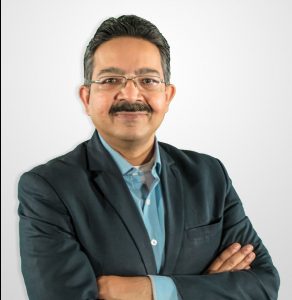 |
Dr Shankar Venugopal is the Vice President at Mahindra & Mahindra. He leads technology innovation and knowledge management for the automotive and farm businesses. As the Dean of the Mahindra Technical Academy, Shankar is focused on helping young engineers to build future skills. |
 |
Mr. Krishna Rao is a part of Intellectual Property Management team at Mahindra & Mahindra. He focuses on providing IP expertise to associates in Farm and Auto division to generate a strong IP portfolio for Mahindra & Mahindra. He is a registered Patent Agent and a certified TRIZ-Level 2 professional. |


